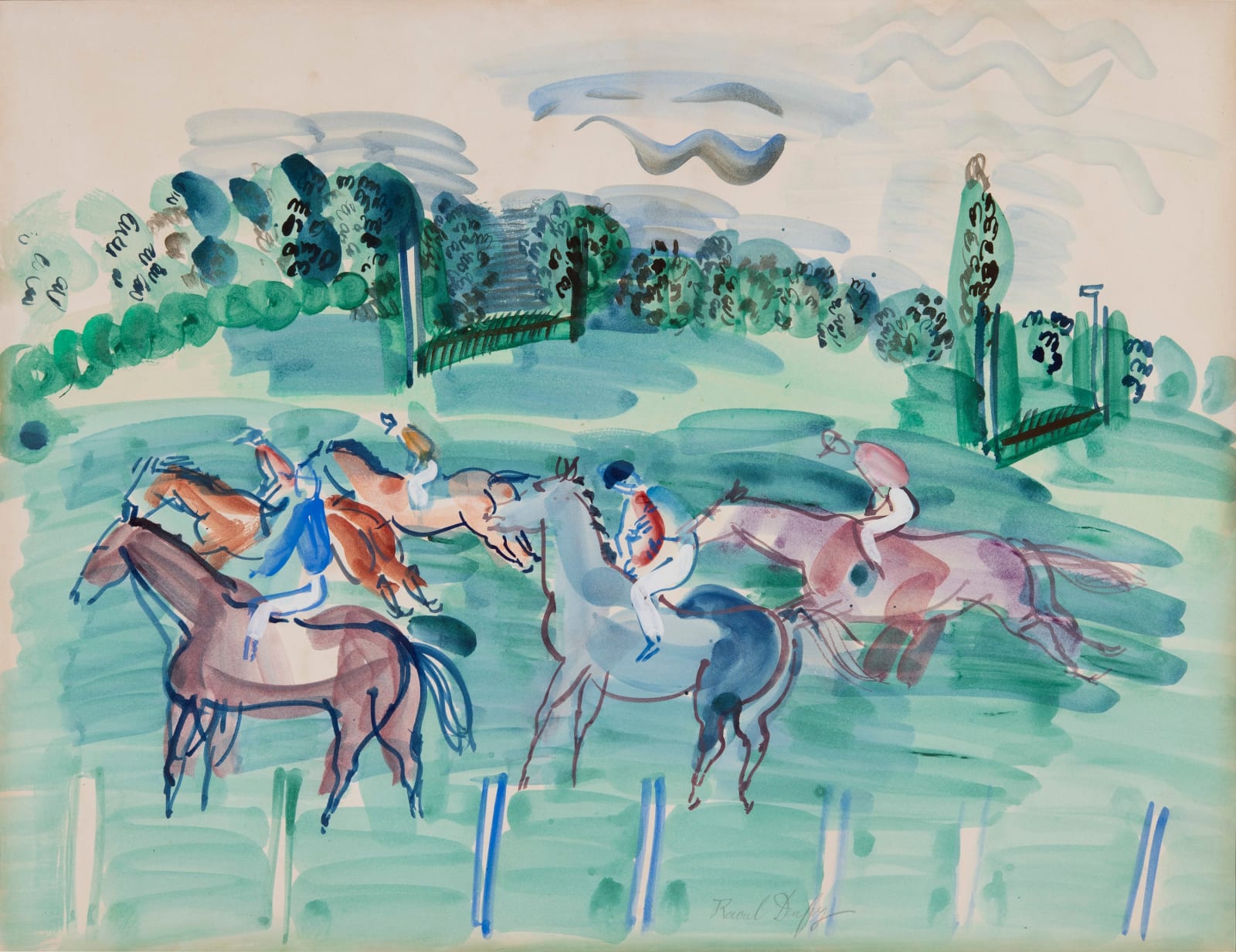-
Artworks
Raoul Dufy
Vers le départ, 1938Gouache and watercolour on paper19 3/4 x 25 5/8 in, 50 x 65.2 cmSigned 'Raoul Dufy' lower centreHorse racing, an activity in which Dufy took much delight, was the primary inspiration for a whole body of his work. He travelled across both France and England enjoying the...Horse racing, an activity in which Dufy took much delight, was the primary inspiration for a whole body of his work. He travelled across both France and England enjoying the spectacle of Longchamp, Ascot, Deauville, Goodwood and Epsom. In these environments high society mixed with sport, providing a wealth of inspiration in the array of activity and people. His fascination with this subject is beautifully illustrated in Vers le départ, where Dufy depicts the thrilling moment of the race start.
It was Dufy’s collaboration with designer Paul Poiret as a print designer, that first instigated the artist’s interest in horse racing. Poiret designed many dresses for ladies attending the races, and thus urged Dufy to study its attendees. From the early 1910s Dufy began to experiment with the subject of horse racing, depicting in stylised watercolours the audience and jockeys of Deauville. It was during the 1930s however, on visiting Epsom and Ascot, that Dufy created some of his most outstanding racing scenes.
Painted in the late 1930s, Vers le départ exemplifies the spontaneity, vibrancy and sense of adventure of Dufy’s mature style. His individual manner of dissociating colour from line – hallmark of his mature style - characterises this watercolour. An astonishing balance of radiant thinly washed colour, applied in sweeping strokes, makes up the background over which Dufy’s jockeys race. The exuberant and fluid brushwork captures the fast movement of the horses and the dynamism of the racers.
Dufy’s horse racing scenes are amongst his most admired, both today and in his lifetime. In 1934, just a few years before creating Vers le depart, Vanity Fair chose one such watercolour to grace its August cover. Paintings of the subject matter are now in many public collections such as Minneapolis Institute of Art (Epsom, 1933) and Musée d’Art Moderne, Paris (Chevaux de course, c.1930).
The present drawing was previously in the collection of famed US philanthropists Fritz and Lucy Jewett.
Provenance
Hammer Galleries, New York
Mr and Mrs David Gaiser, Spokane, Washington (acquired from the above by May 1975)
Fritz and Lucy Jewett
Literature
F. Guillon-Laffaille, Raoul Dufy: Catalogue raisonné des aquarelles, gouaches et pastels, Paris, 1981, vol. I, p. 338, no.924, illus.3of 3
